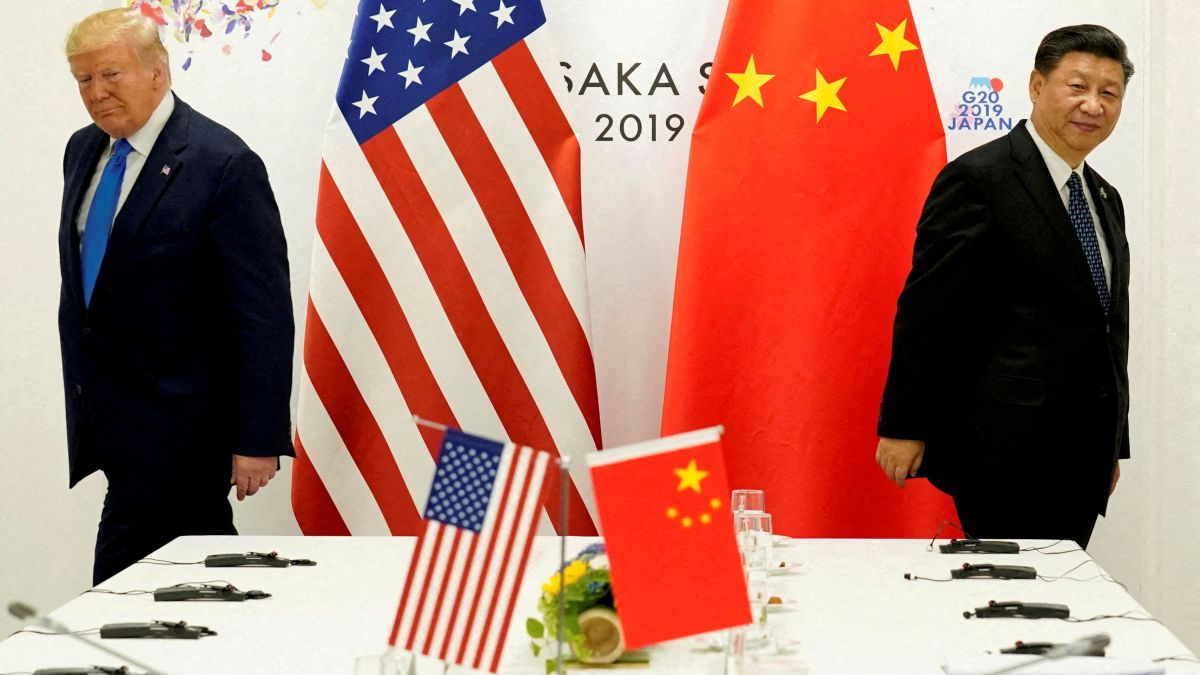No one likes an impoverished former colony becoming the world’s fourth-largest economy. At Independence in 1947, India had a minuscule GDP of Rs. 2.70 lakh crore. By the end of 2025, India’s GDP is projected by the IMF to be Rs. 360 lakh crore ($4.19 trillion). This would make India not only the world’s fourth-largest economy but also, at an annual growth rate of 6.5 per cent, the world’s fastest-growing major economy.
All of these rankles in two global capitals: Washington and Beijing. US President Donald Trump and Chinese President Xi Jinping are resigned to battling each other in a long, drawn-out Second Cold War. The emergence of India as a significant economic and military power is a complication in this G2 global power duopoly.
Trump’s punitive tariff rate of 25 per cent on Indian exports, along with an unspecified penalty for buying oil and military equipment from Russia, reflects Washington’s angst.
India’s economy is still too small—one-fifth China’s size and one-seventh America’s—to be an immediate concern to either. But both know that, over the next decade, India will be the only country outside the G2 that can swing the balance of global power between the US-led West and the China-led East.
India is therefore in the awkward position of being both an ally and a threat to the G2. The recent thaw in India’s relations with China is aimed at lowering the bilateral temperature between Beijing and Delhi. China is meanwhile quietly pleased at the tension between the US and India over trade tariffs.
Impact Shorts
More ShortsWashington has pivoted away from India in Trump’s second term. It wants to keep India in the Western camp but is annoyed at India’s independent streak over foreign and trade policy. The tariff attack is meant to place pressure on India to toe its geopolitical line.
Russia is a red flag. Legislation imposing 100 per cent secondary sanctions on India for buying Russian crude will come up before the House of Representatives when it reconvenes in September. But saner minds in Washington know that India can easily replace the 2.1 million barrels of oil it buys per day from Russia with crude from Saudi Arabia, the UAE, and South America.
As India’s Petroleum Minister Hardeep Singh Puri said, India bought just 0.1 per cent of its total crude from Russia before 2022. It can go back to near-zero again. The world is awash in oil as demand in China tapers amid its move towards green fuels.
The US and China, as they contest global supremacy well into the 2030s, have both tried to weaken India’s resolve. China infiltrated across the Line of Actual Control (LAC) on multiple occasions before opting for a more calibrated strategy after India exhibited military force. Significantly, Beijing did not block the UN Security Council’s condemnation last week of Pakistani terror group TRF (an LeT offshoot). The UNSC, using strong language, said the TRF was responsible for the Pahalgam attack.
Future world order?
In his new book The Once and Future World Order, Amitav Acharya, distinguished professor of international relations at American University in Washington, DC, argues that the US-led Western world order was a continuation of older world orders—including civilisations in India and China.
Acharya says that as the West declines, the “Rest” will form a multiplicity of global power blocs. That does not align with the US-China construct of a G2 world.
While Washington and Beijing are discomfited by a rising India, some commentators in India downplay the decline of the West that Acharya accurately portrays and underplay the rise of the Rest.
For example, C Raja Mohan, distinguished fellow at the Council of Defence and Strategic Research, wrote in The Indian Express on July 30: “Acharya’s critique of Western dominance is compelling, but not all aspects of the Western legacy can or should be discarded. The Enlightenment ideals of the 17th and 18th centuries—reason, scepticism, science, individual liberty, and secularisation of society away from religious dominance—are at the very foundation of Western primacy in the last three centuries."
“If the East wishes to lead in shaping the world order, it must engage these ideals critically and constructively. Any notion that the East can rise by short-circuiting these values is an illusion. It only delays and derails the effort to rise. The battles against political, religious, and other absolutisms remain to be fought and won in the East. Until then, a rising East will not present an alternative model—only a different and less attractive one. The profound internal contradictions within and across the East will continue to keep it well behind the West.”
This is the sort of commentary Western institutions use to buttress their own thesis of Western supremacy in a Trump-led world.
In Raja Mohan’s article, the West is lauded for its “reason, scepticism, individual liberty, and secularisation of society” without a word (beyond the solitary reference to “exploitation”) pointing out the other contributory factors for the West’s rise: rapacious colonialism, the transatlantic slave trade, and extra-territorial invasions. All occurred after the Age of Enlightenment.
Acharya’s conclusions of a “multiplex” global order might be an old idea wrapped in a new cover, but it stays honest to the history of the West and the Rest.
The rise of China, for example, is inevitable. So is India’s over a longer period. The two Asian powers may meanwhile reach a modus vivendi over the next few critical years. By 2035, the combined GDP of China ($30 trillion) and India ($8 trillion) will equal the estimated US GDP at the time ($38 trillion).
The G2 could then morph into a G2+1 before becoming a full-fledged G3. It is not a prospect either Washington or Beijing relishes.
The writer is an editor, author and publisher. Views expressed in the above piece are personal and solely those of the author. They do not necessarily reflect Firstpost’s views.
)